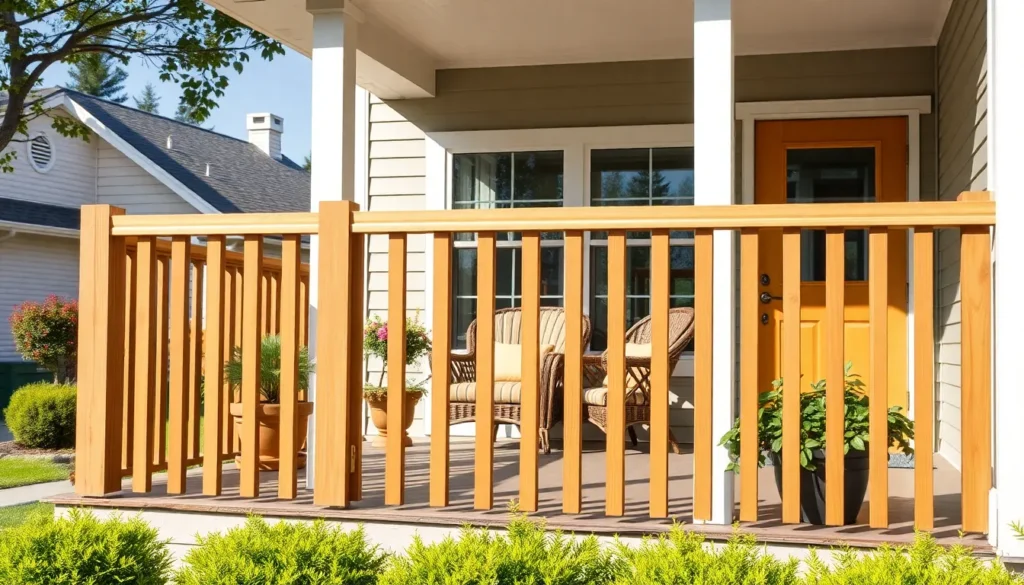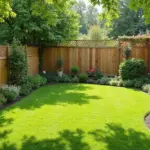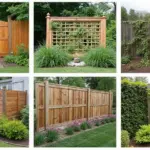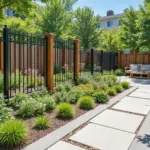Your front porch sets the tone for your entire home’s curb appeal and the railing you choose can make or break that first impression. We’ve all walked past houses where stunning railings caught our eye and made us pause to admire the craftsmanship and design choices.
Whether you’re building a new porch or upgrading an existing one the railing options available today are practically endless. From classic wooden balusters that evoke timeless charm to sleek modern metal designs that scream contemporary sophistication we’ll explore ideas that fit every style and budget.
The right porch railing doesn’t just provide safety and support – it transforms your outdoor space into an extension of your home’s personality. We’ll show you how to choose materials colors and designs that complement your architecture while creating the welcoming entrance you’ve always envisioned.
Classic Wood Railing Designs for Timeless Appeal
Wood railings remain the most popular choice for front porches across America, offering natural beauty that complements virtually any architectural style. These designs create lasting appeal that enhances property value while providing essential safety features.
Traditional Spindle Railings
Traditional spindle railings feature slender vertical balusters that create elegant spacing between top and bottom rails. We see these classic designs most commonly in Victorian and Colonial homes, where turned spindles showcase intricate woodworking craftsmanship. Popular spindle patterns include simple turned designs, ornate bulbous shapes, and square tapered styles that suit different architectural preferences.
Installation typically requires spindles spaced 4 to 6 inches apart to meet building codes while maintaining visual appeal. Cedar and pressure treated pine offer excellent durability for outdoor spindle railings, with cedar providing natural weather resistance and pine offering budget friendly options. Many homeowners choose white painted finishes for crisp contrast against darker siding, while natural wood stains highlight the grain patterns beautifully.
Craftsman-Style Square Balusters
Craftsman style square balusters emphasize clean lines and sturdy construction that reflects the Arts and Crafts movement’s principles. These thick, substantial balusters typically measure 2×2 inches or larger, creating bold geometric patterns that complement Prairie and Bungalow home styles. Spacing usually ranges from 4 to 8 inches between balusters, allowing more light and air flow than traditional spindle designs.
We often see these railings paired with wide top rails and substantial newel posts that reinforce the substantial, handcrafted appearance. Popular wood choices include oak, mahogany, and Douglas fir, which showcase prominent grain patterns when finished with penetrating stains. Dark walnut and mission oak stains particularly enhance the authentic Craftsman aesthetic that many homeowners desire.
Rustic Log and Branch Railings
Rustic log and branch railings bring natural woodland charm to cabin style homes and country properties. These designs incorporate whole logs, split rails, or naturally curved branches that create organic flowing lines unlike manufactured lumber products. Cedar logs work exceptionally well for these applications due to their natural preservatives and attractive appearance that weathers to silver gray over time.
Branch railings often feature curved sections that follow natural growth patterns, creating unique installations that no two homes share identically. We recommend sourcing materials from local suppliers who can provide properly dried and treated logs to prevent cracking and insect damage. Mountain laurel, willow, and birch branches offer particularly attractive options for decorative infill panels between larger structural posts.
Modern Metal Railing Options for Contemporary Homes
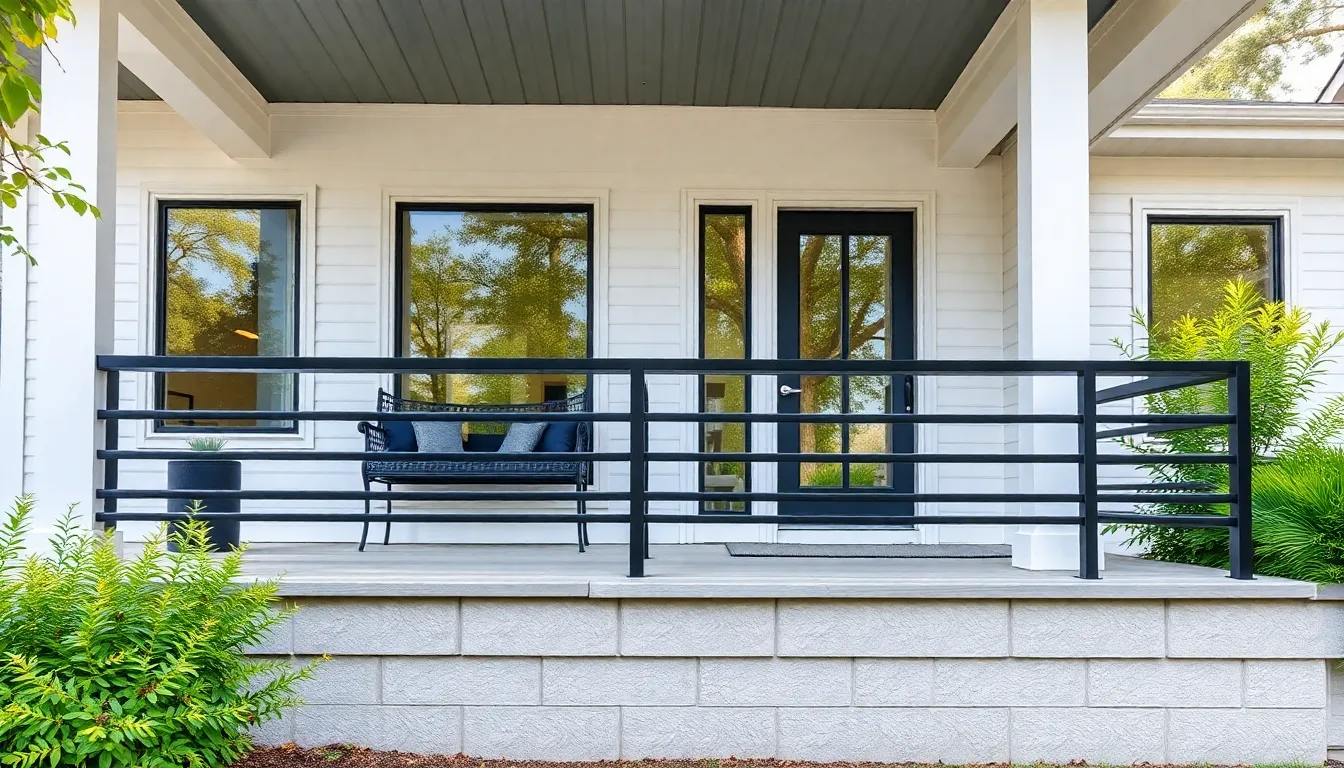
Contemporary architecture demands railing answers that balance clean aesthetics with functional durability. Metal railings offer the perfect combination of sleek design and structural integrity for modern front porches.
Sleek Aluminum Horizontal Rails
Aluminum horizontal rails create a streamlined appearance that perfectly complements contemporary home designs. These lightweight yet durable railings feature minimalistic profiles that won’t overwhelm your porch’s visual appeal. We recommend powder-coated finishes in black, white, or gray to either blend seamlessly with your exterior or create striking contrast against your home’s facade.
Horizontal orientation delivers an open, airy feel while maintaining essential safety standards. The clean lines work exceptionally well with modern architectural styles, from mid-century modern to contemporary farmhouse designs. Installation proves straightforward due to aluminum’s lightweight nature, and the material resists rust and corrosion naturally.
Industrial Black Iron Designs
Black iron railings bring bold, industrial character to contemporary front porches with their robust appearance. Custom geometric patterns or simple linear designs add architectural interest without creating visual clutter. The dark finish enhances contrast beautifully on lighter-colored homes while providing timeless appeal that transcends passing trends.
Iron’s versatility allows for decorative motifs ranging from abstract patterns to subtle floral elements. This flexibility bridges the gap between purely industrial aesthetics and artistic expression. We’ve seen these railings transform ordinary porches into statement pieces that command attention from the street.
Stainless Steel Cable Railings
Cable railings deliver unobstructed views while maintaining a lightweight, contemporary appearance that modern homeowners love. Stainless steel cables run horizontally between posts, providing safety without the visual bulk of traditional railing systems. This design works exceptionally well for porches overlooking scenic landscapes or gardens.
Installation requires precision to maintain proper cable tension and meet safety standards. The thin cable lines keep sightlines completely open and clean, making spaces feel larger and more connected to their surroundings. These railings mix beautifully with wood or metal posts and can be combined with other materials for completely custom looks.
Composite and Vinyl Railing Solutions for Low Maintenance
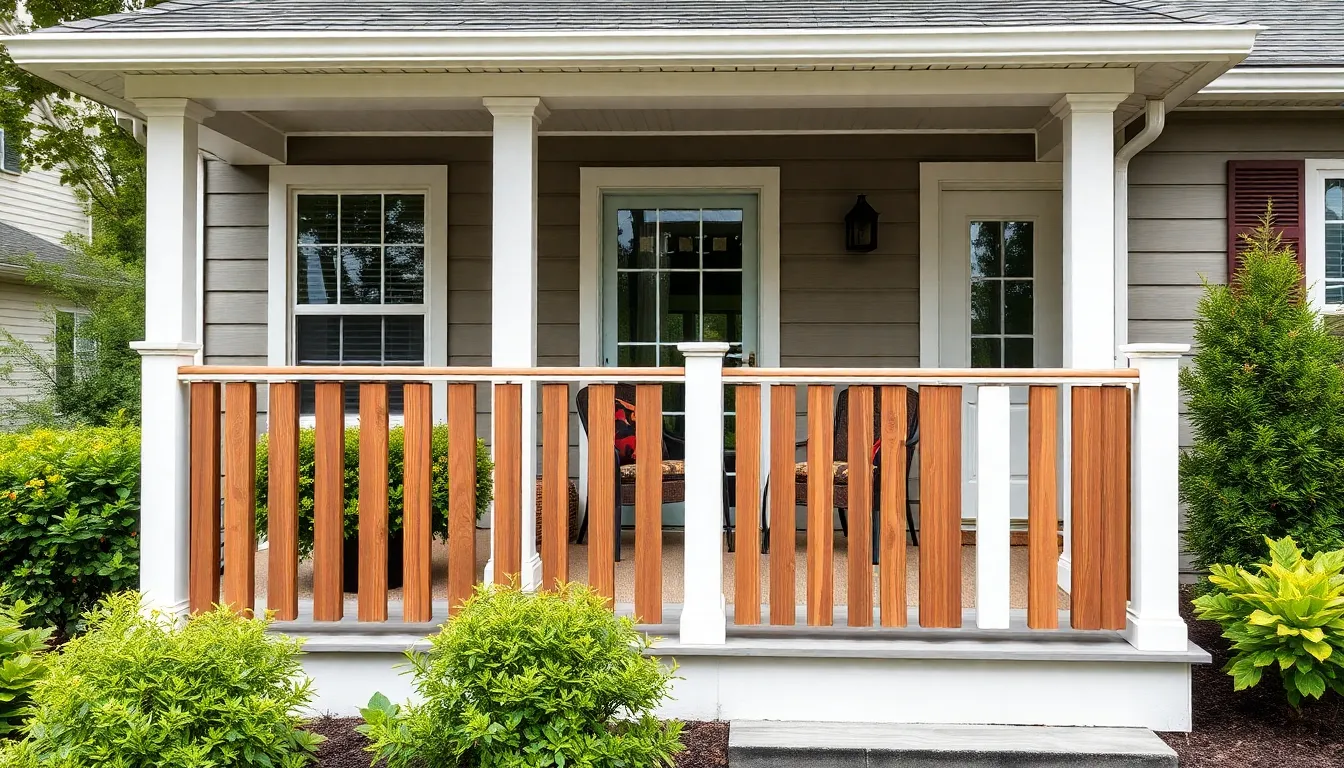
Modern synthetic materials offer exceptional durability with minimal upkeep requirements. We’ll explore three leading options that deliver both aesthetic appeal and practical benefits.
Durable PVC Railing Systems
PVC railing systems represent the pinnacle of weather resistance for front porch applications. These polyvinyl chloride constructions maintain their structural integrity through extreme temperature fluctuations, moisture exposure, and UV bombardment without requiring annual maintenance rituals.
Key Benefits:
- Moisture resistance prevents warping and rot
- Integrated color eliminates painting needs
- Structural stability withstands heavy use
- Easy cleaning with soap and water
We recommend PVC systems for homeowners seeking maximum longevity with zero refinishing requirements. Color options integrate directly into the material itself, preventing the chipping and peeling common with painted surfaces.
Wood-Grain Composite Materials
Wood-grain composites blend recycled wood fibers with advanced plastics to create railings that mimic natural wood textures. Trex Transcend® leads this category by offering authentic wood appearances while eliminating traditional wood maintenance concerns.
Material Advantages:
- Authentic wood texture and grain patterns
- Resistance to fading, cracking, and splintering
- No sanding or staining requirements
- Immunity to rot and insect damage
These engineered materials capture the warmth and character of natural wood while providing superior weather resistance. Mix and match options allow customization of colors and textures to complement existing architectural elements.
Color-Matched Vinyl Options
Color-matched vinyl railings feature factory-applied finishes that coordinate seamlessly with home exteriors. These systems eliminate the guesswork of paint selection while ensuring consistent color throughout the railing structure.
Available Color Options:
| Color Category | Popular Choices |
|---|---|
| Neutral Tones | White, Cream, Almond |
| Earth Tones | Tan, Beige, Clay |
| Contemporary | Gray, Charcoal, Bronze |
Factory color application ensures uniform coverage and prevents the streaking often associated with field-applied finishes. We find these systems particularly valuable for homeowners who want cohesive exterior design without ongoing paint maintenance.
Stone and Masonry Railing Ideas for Elegant Sophistication
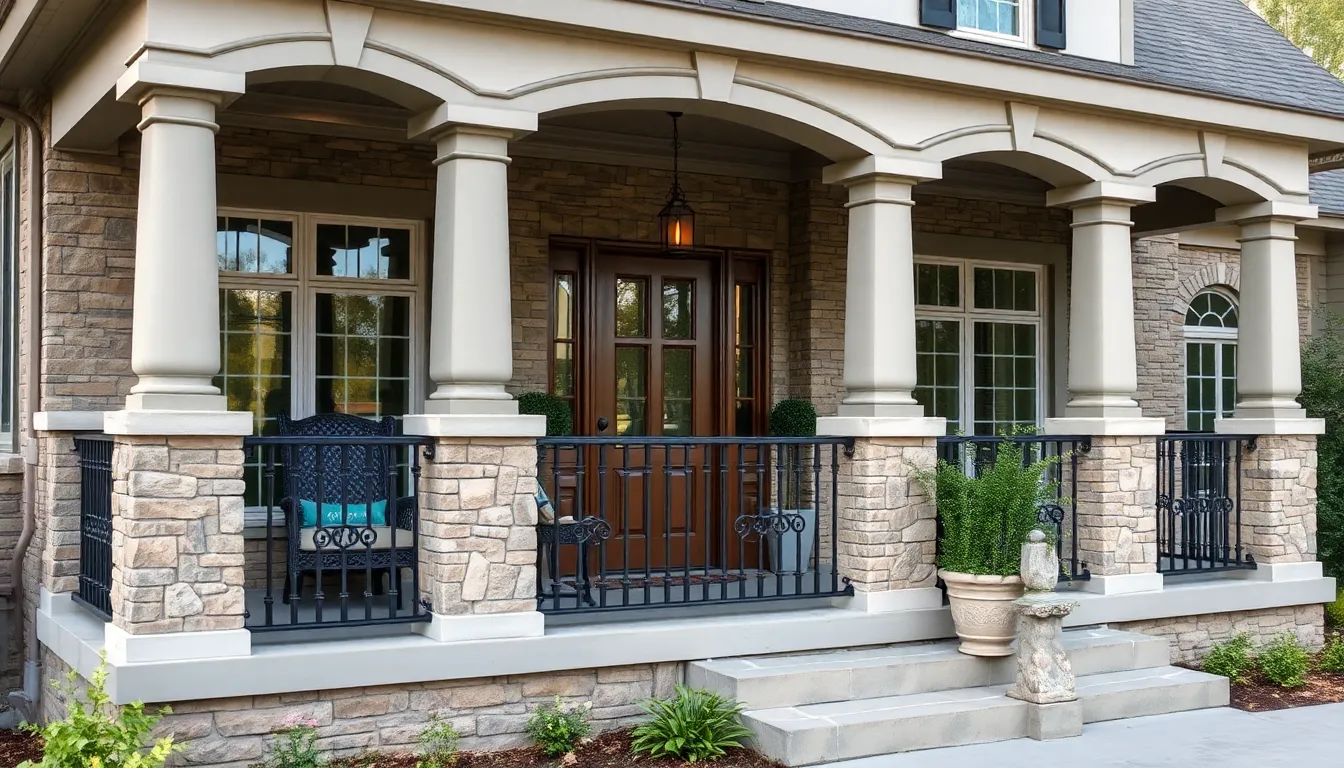
Stone and masonry railings bring timeless elegance and unmatched durability to front porches, creating sophisticated boundary elements that complement virtually any architectural style.
Natural Stone Pillar Railings
Natural stone pillars create the most robust and refined foundation for porch railings we’ve encountered. Granite, limestone, and sandstone serve as the primary materials, each offering unique texture variations that add character to your entrance. These pillars typically support wooden or metal rails, creating beautiful material combinations that balance strength with visual appeal.
Stone pillars accept decorative caps like carved stone elements or metal finishes, improving your porch’s overall sophistication. Their natural color variations provide charming contrasts against wood or metal components, making each installation unique. We recommend selecting stone that complements your home’s existing masonry to maintain architectural harmony.
Brick and Mortar Combinations
Brick railings deliver classic warmth and traditional appeal that perfectly suits Craftsman, Colonial, and Tudor style homes. Complete brick construction offers maximum durability, while combinations with wrought iron or wood create visually interesting contrasts. Mortar joints allow for extensive customization through various colors and finishes, letting you tailor the appearance to your exact preferences.
Different brick laying patterns add unique textures that enhance curb appeal while maintaining structural integrity. These combinations provide sturdy, low maintenance answers that add permanent value to your property. We’ve found that brick railings create an immediate sense of established elegance that ages beautifully over time.
Stucco Finished Concrete Rails
Stucco finished concrete rails offer smooth, customizable surfaces that can mimic expensive stone or plaster finishes at a fraction of the cost. This versatile material forms into curved or angular designs, making it particularly suitable for Mediterranean and Spanish style homes. Stucco accepts various color tints, allowing your railing to either blend seamlessly with your exterior or create striking architectural contrast.
Weather resistance and durability make these rails practical long term investments that maintain their appearance through harsh conditions. Clean, elegant lines provide design flexibility while delivering the solid presence of traditional masonry. We appreciate how stucco rails balance substantial construction with creative design possibilities, offering homeowners the best of both worlds.
Creative Mixed-Material Railing Combinations
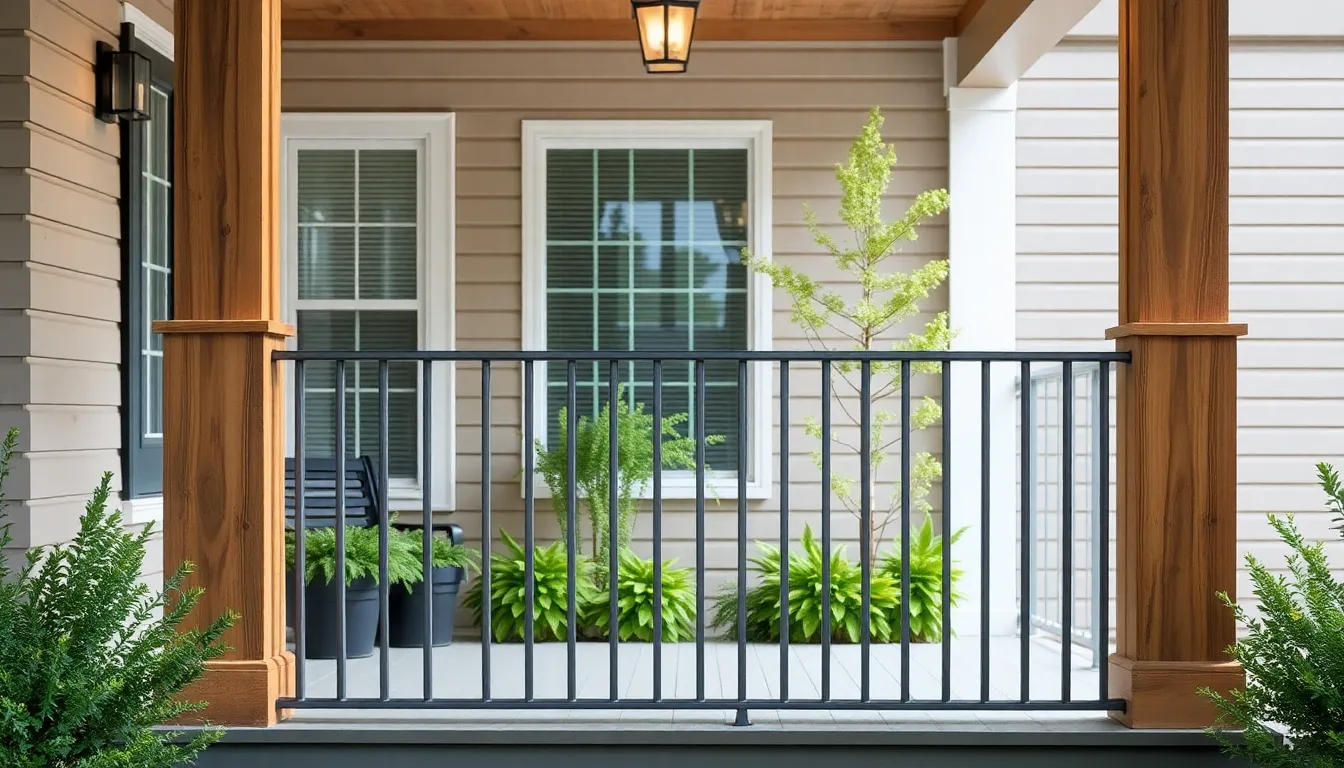
We’re discovering that the most striking front porch railings combine multiple materials to create unique visual interest and enhanced functionality. These hybrid designs offer homeowners the best attributes of different materials while establishing a distinctive architectural statement.
Wood and Metal Hybrid Designs
Wood and metal combinations deliver the perfect balance of warmth and durability for modern porch railings. We recommend horizontal or vertical metal pipes framed by natural wood sections like cedar to achieve a contemporary yet inviting appearance. Metal balusters positioned between wooden posts create compelling texture contrasts while maintaining structural integrity.
These hybrid designs work exceptionally well with double top rails, where the wooden rail provides traditional warmth and the metal components add sleek modern lines. Cedar frames paired with powder coated steel inserts offer weather resistance and visual appeal that complements both contemporary and rustic home styles. We’ve found that this combination requires minimal maintenance while providing long term durability.
Stone Pillars with Metal Inserts
Stone pillars serve as powerful architectural anchors that establish a timeless foundation for porch railings. When we pair granite, limestone, or sandstone pillars with wrought iron or bronze inserts, the result creates an elegant contrast between natural and industrial elements. These combinations enhance both classic and modern home designs with sophisticated outdoor appeal.
Evenly spaced stone columns connected by minimalist geometric metal spindles produce clean lines that frame scenic views beautifully. The substantial weight of stone pillars provides exceptional stability for metal railing sections, while the natural textures add authentic character that manufactured materials can’t replicate. We recommend this approach for homeowners seeking a distinguished look that increases property value.
Glass Panel Accent Railings
Glass panel railings offer unobstructed views while maintaining safety requirements for elevated porches. We suggest pairing these transparent panels with wood or metal frames to create contemporary designs that maximize scenic overlooks. Alternating glass sections with narrow wooden boards maintains structural integrity while improving visual openness.
Glass balusters combined with white or natural wood posts reflect natural light and create bright, airy impressions that work especially well in mountain or waterfront settings. These panels can be installed without top rails for completely uninterrupted views, making them ideal for porches overlooking gardens, lakes, or scenic landscapes. We’ve observed that glass railings paired with natural materials create the perfect balance of modern sophistication and organic warmth.
Budget-Friendly DIY Front Porch Railing Projects
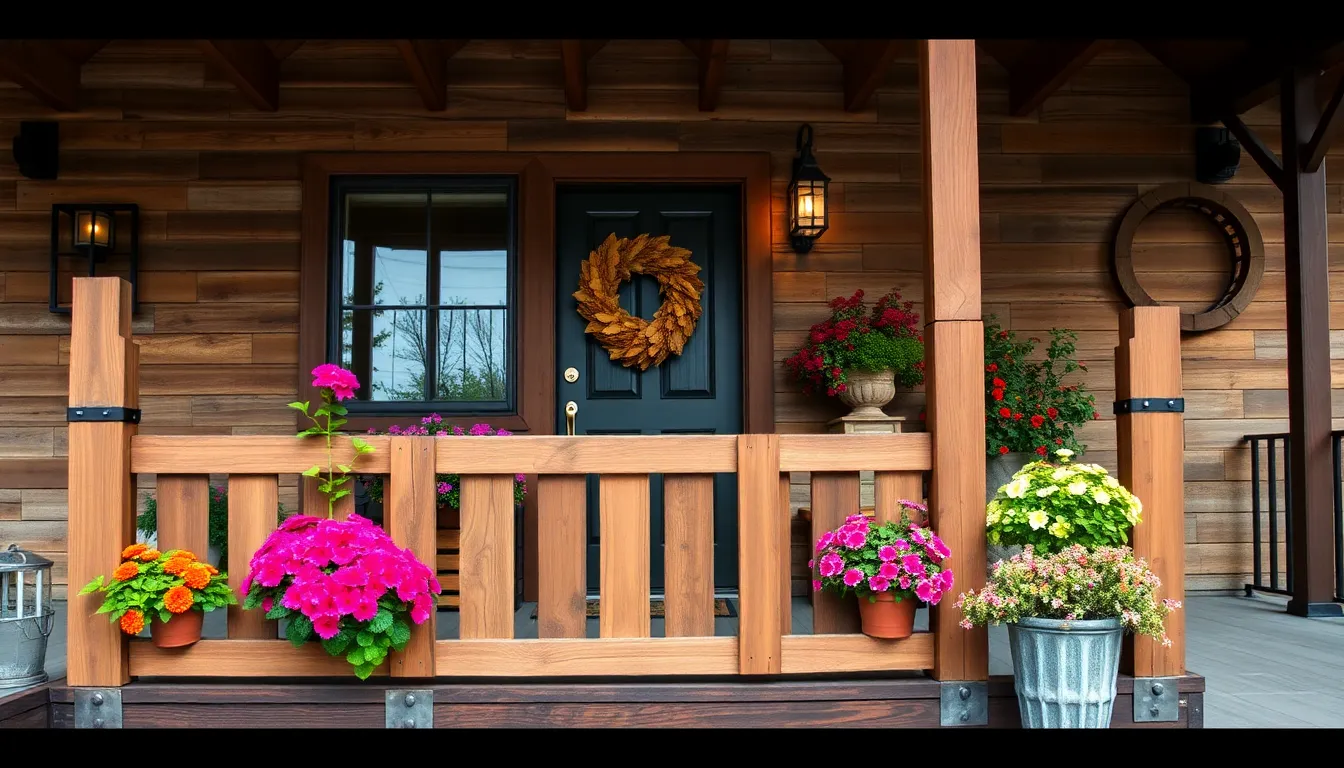
Creating stunning front porch railings doesn’t require a professional contractor or expensive materials. DIY projects offer homeowners the opportunity to save money while adding personal touches that reflect their unique style.
Repurposed Pallet Railing Ideas
Pallet wood transforms into beautiful rustic railings that cost a fraction of traditional materials. We can break down pallets and reassemble the boards into vertical balusters, horizontal slats, or decorative lattice patterns that add character to any porch.
Eco-friendly homeowners love this sustainable approach because it diverts waste from landfills while creating unique design elements. The natural weathered look of pallet wood complements farmhouse and cottage style homes perfectly.
Customizing pallet railings becomes simple with paint or stain applications that match your home’s exterior color scheme. We recommend sanding the wood smooth and applying a protective finish to extend the lifespan of your pallet railing project.
Simple Pipe and Fitting Designs
Metal pipes paired with wooden posts create modern railings with industrial appeal at minimal cost. This combination offers excellent durability while maintaining a sleek, contemporary aesthetic that works well with various architectural styles.
We can frame horizontal pipe runs between wooden posts or create vertical pipe balusters for different visual effects. Powder coating or painting the pipes prevents rust formation and allows color coordination with your home’s exterior.
Structural strength improves significantly when combining metal pipes with wood framing elements. The contrasting materials create visual interest while meeting safety requirements for porch railings.
Painted Pressure-Treated Lumber Options
Pressure-treated lumber provides an affordable foundation for DIY railing projects while offering natural resistance to rot and insects. We can construct sturdy railings using basic 2×4 lumber that withstand weather conditions for years.
Painting extends the wood’s lifespan by adding extra weather protection and allows unlimited color customization. Clean, finished appearances emerge when we apply quality exterior paint over properly primed pressure-treated wood.
Simple designs using lattice panels framed by posts create attractive railings that blend traditional and modern elements. These straightforward construction methods make pressure-treated lumber railings accessible for beginning DIY enthusiasts while delivering professional-looking results.
Safety Considerations and Building Code Requirements
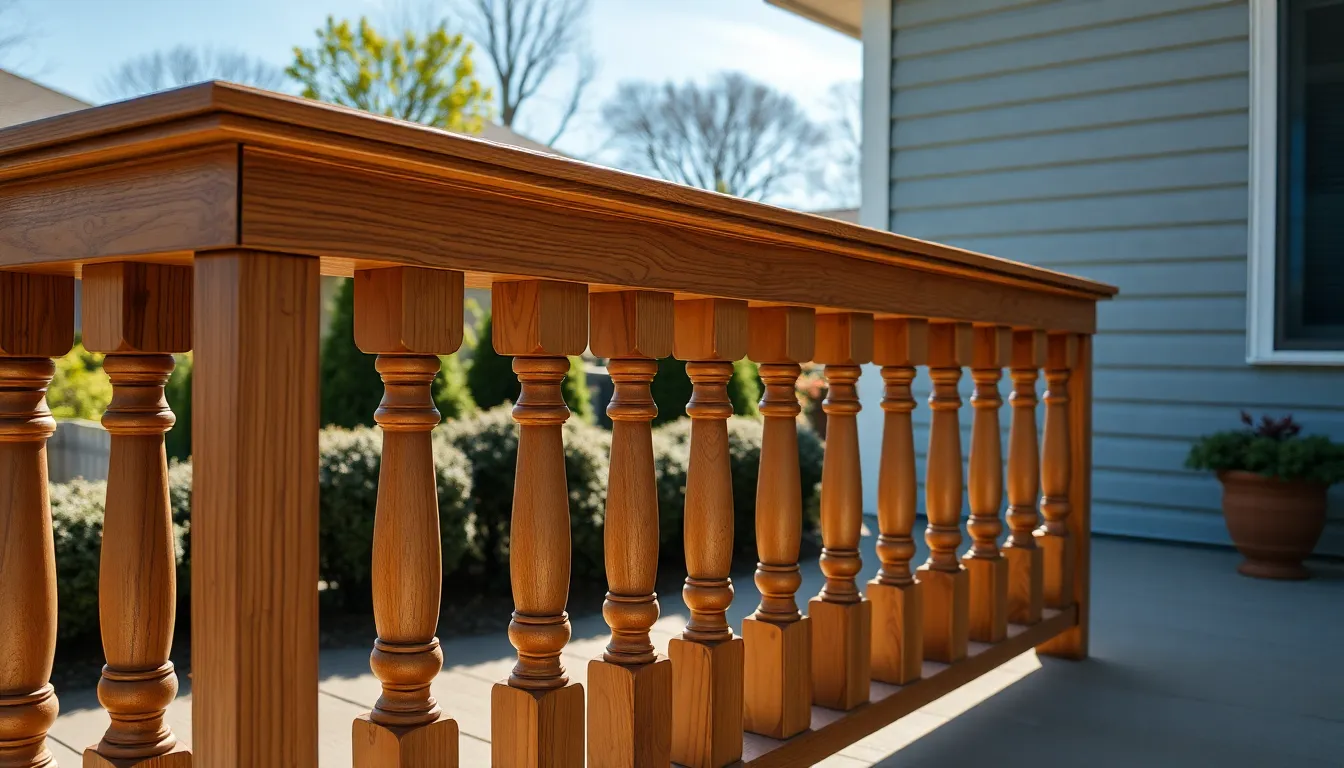
While creative design options abound for front porch railings, we must prioritize safety and compliance with building codes. These regulations exist to protect residents and visitors from accidents while ensuring structural integrity.
Height and Spacing Regulations
Minimum height requirements for front porch railings start at 36 inches, measured from the porch floor to the top of the railing. Local jurisdictions may require railings up to 42 inches high, particularly for commercial properties or multifamily buildings.
Baluster spacing regulations mandate that gaps between vertical posts cannot exceed 4 inches to prevent children or pets from slipping through. Stair railings have additional requirements where openings must be small enough that a 6-inch sphere cannot pass through any gaps formed by treads and risers.
Installation triggers require guardrails on any porch or deck exceeding 30 inches above ground level. This height threshold activates most building code requirements for front porch safety features.
Load-Bearing Capacity Standards
Baluster strength testing requires each one-square-foot area of railing infill to resist at least 125 pounds of force applied in any direction. This standard ensures individual components won’t fail under normal use or accidental impact.
Top rail load capacity must withstand both uniform loads of 125 pounds per linear foot and concentrated loads of 500 pounds at any mid-span or post location. These requirements account for people leaning against railings or applying sudden pressure.
Safety factor calculations apply a 2.5 multiplier to all load tests, providing an extra margin of safety beyond expected normal use. This engineering standard helps prevent catastrophic failures and extends the railing’s service life.
Permit and Inspection Guidelines
Building permit requirements typically apply before constructing or modifying porch railings, especially for porches elevated above 30 inches. We recommend checking with local building departments early in the planning process.
Inspection procedures verify that railing height, spacing, and strength requirements meet local building codes. Professional inspectors examine both the installation quality and compliance with safety standards.
Historic property considerations sometimes allow temporary modifications to meet safety codes without compromising architectural integrity. Local building officials often work with homeowners to find answers that balance preservation with safety requirements.
Conclusion
Your front porch railing is more than just a safety feature – it’s the handshake your home extends to every visitor. We’ve explored countless options that can transform your entrance from ordinary to extraordinary without very costly.
Whether you’re drawn to the timeless appeal of wooden spindles or the sleek sophistication of cable railings the perfect solution exists for your style and budget. The key lies in choosing materials and designs that complement your home’s architecture while reflecting your personal taste.
Remember that building codes aren’t suggestions – they’re requirements that ensure your family’s safety. We recommend consulting local authorities before starting your project to avoid costly mistakes and ensure compliance.
With proper planning and the right approach your new porch railing will enhance your home’s curb appeal for years to come. Start exploring these ideas today and give your home the welcoming entrance it deserves.
Frequently Asked Questions
What materials are best for front porch railings?
The best materials depend on your home’s style and maintenance preferences. Wood offers natural beauty and versatility, while metal provides modern durability. Composite and vinyl require minimal maintenance, and stone adds timeless elegance. Consider factors like climate, budget, and architectural style when choosing materials.
How high should front porch railings be?
Most building codes require front porch railings to be at least 36 inches high. However, local codes may vary, so check with your municipality. This height ensures safety while maintaining proper proportions with your porch design.
Do I need a permit to install porch railings?
Yes, most areas require building permits for porch railing installation. Contact your local building department to understand specific requirements. Permits ensure your railings meet safety codes and structural standards, protecting your family and maintaining property value.
Can I install porch railings myself?
Many porch railing projects are DIY-friendly, especially simple designs using materials like pressure-treated lumber or metal pipes. However, complex installations or structural modifications may require professional help. Always check local building codes and your skill level before starting.
What’s the most low-maintenance porch railing option?
Composite, vinyl, and PVC railings offer the lowest maintenance requirements. These materials resist weather damage, don’t require annual painting or staining, and maintain their appearance for years. While initially more expensive, they save money long-term through reduced maintenance costs.
How do I choose railing colors that complement my home?
Select colors that harmonize with your home’s existing palette. Classic white works with most styles, while darker colors like black or brown add sophistication. Consider your home’s architectural style, exterior colors, and surrounding landscape when making your decision.
What spacing is required between railing balusters?
Building codes typically require baluster spacing of no more than 4 inches apart to prevent small children from getting stuck. This measurement is taken at the narrowest point between balusters. Always verify local code requirements before installation.
Are glass panel railings safe for front porches?
Yes, when properly installed with tempered safety glass, glass panel railings are safe and code-compliant. They offer unobstructed views while maintaining required safety barriers. Combine with sturdy frames made of wood or metal for optimal security and durability.

